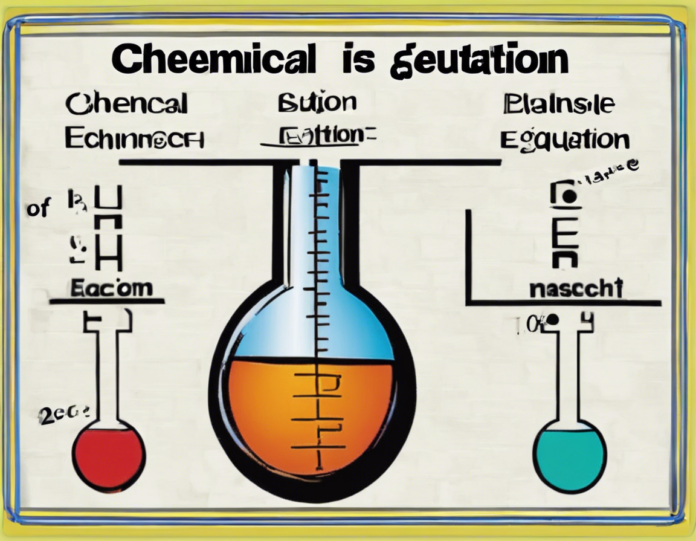Chemical equations are the symbolic representation of a chemical reaction using the chemical formulas of the reactants and products. Balancing chemical equations is a fundamental skill in chemistry that ensures the law of conservation of mass is obeyed – meaning that the same number and types of atoms must be present in the reactants and products. Unbalanced equations are like incomplete sentences; they do not provide a clear picture of the reaction taking place.
Why Balance Chemical Equations?
Balancing chemical equations is vital in chemistry for several reasons:
-
Accuracy: A balanced chemical equation accurately represents the reactants and products involved in a chemical reaction.
-
Conservation of Mass: Balancing ensures that the number of atoms of each element is the same on both sides of the equation, as required by the law of conservation of mass.
-
Stoichiometry: Balanced equations allow for the determination of the mole ratios of reactants and products, which is crucial for understanding the quantitative aspects of a reaction.
-
Predicting Products: By balancing equations, you can predict the products formed in a reaction given the reactants.
The Method Simplified
Balancing chemical equations may seem daunting at first, but with the right approach, it can be broken down into simple steps:
Step 1: Write Down the Unbalanced Equation
Start by writing down the unbalanced chemical equation for the reaction. Make sure to list all the reactants and products involved.
Step 2: Count the Atoms on Each Side
Next, count the number of each type of atom on both sides of the equation. This step is crucial as it will guide you in determining how to balance the equation.
Step 3: Balance the Most Complex Compound First
Begin by balancing the most complex compound in the equation. This is usually a compound with more elements in it.
Step 4: Adjust Coefficients
To balance the equation, use coefficients in front of the compounds. Do not change the subscripts of the elements in the compounds as this would change the identity of the substances involved.
Step 5: Check and Repeat if Necessary
After assigning coefficients to balance the equation, double-check to ensure that the number of atoms for each element is the same on both sides. If the equation is not balanced, repeat the process until it is.
Tips for Balancing Chemical Equations
- Start with Elements That Appear Once: Balance elements that appear only once on each side of the equation first to simplify the process.
- Use Fractions: If needed, you can use fractions as coefficients to balance equations. Just make sure to multiply all coefficients in the equation to eliminate fractions before proceeding.
- Polyatomic Ions: Treat polyatomic ions that appear together as a single unit to make balancing easier.
- Check Your Work: Always double-check your balanced equation to ensure accuracy.
Frequently Asked Questions (FAQs)
Q1: Why do we need to balance chemical equations?
A1: Balancing chemical equations is essential to ensure that the law of conservation of mass is obeyed, as it states that matter cannot be created or destroyed in a chemical reaction.
Q2: What are the key components of a balanced chemical equation?
A2: The key components include reactants, products, coefficients (numbers in front of compounds), and the equality sign.
Q3: Can you change subscripts when balancing chemical equations?
A3: No, subscripts represent the number of atoms of each element in a compound and cannot be changed when balancing equations.
Q4: How do you know when a chemical equation is balanced?
A4: A chemical equation is balanced when the number of atoms for each element is the same on both the reactant and product sides.
Q5: Are there any shortcuts to balancing chemical equations?
A5: While practice is key to mastering balancing equations, starting with elements that appear once on each side and using fractions can simplify the process.
In conclusion, balancing chemical equations is a foundational skill in chemistry that unlocks a deeper understanding of chemical reactions. By following a systematic approach and utilizing key tips and tricks, you can master the art of balancing chemical equations with ease. Remember, practice makes perfect, so don’t hesitate to tackle various equations to hone your skills in this essential aspect of chemistry.






